Dissidia Final Fantasy NT Review
Let’s get this out of the way - Dissidia Final Fantasy NT is not a RPG. It is a console release of the Dissidia Final Fantasy arcade game that released in Japan a little over two years ago. NT comes with a few bells and whistles like a story mode, but it has doubled down on the fighting game aspect of it.
Fans of the previous PlayStation Portable Dissidia games expecting the same RPG systems in NT are in for a surprise; there are practically none. Weapons, armor sets, and outfits are all cosmetic skins. There are no stats associated with them. You can buy them at an in-game shop with gil… or you can roll for them.
Yes, Dissidia Final Fantasy NT does have a loot box element through the treasure system though it’s not as insidious as you might think. Perhaps even labeling it as a “loot box” is a bit of a stretch. The currency to roll for these treasures are all earned in-game - there is no way to purchase them with real money whatsoever.

Spending a single one of these treasure currencies yields three random items that are inconsequential to the gameplay itself. You can earn player icons, background music tracks, voiced character lines, and character equipment that’s purely for cosmetic purposes only. It’s relatively harmless and players can choose to buy their favorites from the shop. Think of Overwatch’s approach to loot boxes without the option to buy the crates with real money.
Earning the gil to buy your favorite outfits and weapon skins is a grind though. Their asking prices are steep for the small amount of gil you earn. Some story stages do reward you with a decent amount upon their initial completion; online battles, on the other hand, give a pitiful amount no matter how well you’ve performed.
Nevertheless, NT is packed with some awesome alternate outfits for characters. Vaan’s stylish attire from Final Fantasy XII: Revenant Wings and Ramza’s mercenary armor from Final Fantasy Tactics are just a few neat callbacks for fans. You can even glamour up the player icons by adding sparkles and a layer of sheen over it to show off.
The only reliable source of gil income is through Dissidia Final Fantasy NT’s equivalent of an arcade mode - the Gauntlet. This is the meat of its offline offerings beyond its story. You and your two AI allies fight through a series of stages that progressively get more difficult. Fighting tougher foes yields more points, which eventually leads to better rewards once you hit certain milestones.
Since NT doesn’t have the option for local co-op play, you’re stuck babysitting AI teammates. They’ll rank up and become “smarter” the more time you stick with them, but quite frankly they still feel unreliable even at the higher end of the spectrum.
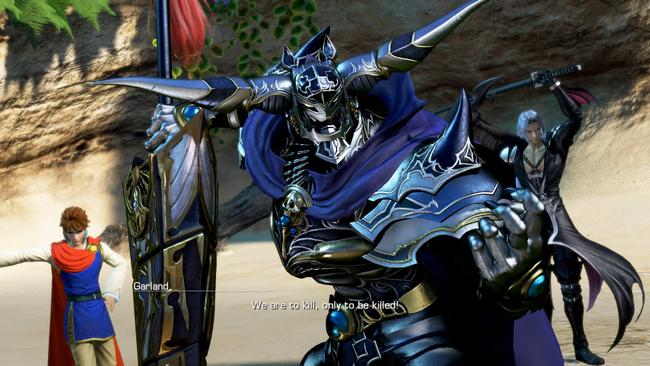
With all the treasures and shop aspects out of the way, let’s delve into what Dissidia Final Fantasy NT actually is. It’s no longer a 1vs1 arena duel like its portable predecessors; NT’s entire framework is designed and tuned for 3vs3 battle arena confrontations. The insanity may seem a bit much at first, but I’ve actually come around to really enjoy it the more I played and learned the intricacies of it all.
Much of its core systems will be familiar to series veterans. There are two types of attacks - bravery and HP. Bravery is your damage value, so you build it up with bravery attacks to cash them out through a HP attack. Depleting an opponent’s bravery to zero will break them and reward you a significant amount of bravery - but that also holds true for foes as well, so keeping your bravery high ensures that opponents don’t get the upper hand. Every HP attack that you land also empties out your current stock of bravery, so you’ll be immediately susceptible to breaking if an enemy is near you.
This constant tug-of-war of offense and defense through bravery is what keeps Dissidia’s battle mechanics compelling. You’re faced with decisions that ultimately decide whether or not your team will prevail. Once a team suffers a total of three casualties, they lose the match. Thus, a team is as strong as their weakest player and a lot of NT’s auxiliary systems revolve around teamwork.
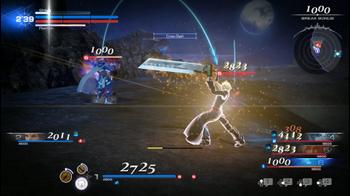
Characters in Dissidia Final Fantasy NT are now divided between four classes: Vanguards, Assassins, Marksmen, and Specialists. Vanguards serve as your typical frontline that lead the charge and get up close to hit with powerful attacks. Assassins are a more mobile set that attack swiftly with multiple strikes. Marksmen usually fire off from safe distances with a multitude of spells. Meanwhile, Specialists are on an odd plane of their own that possess unique mechanics to truly distinguish their combatants from the rest.
Vanguards, Assassins, and Marksmen work in tandem with each other much like rock-paper-scissors. Vanguards don’t immediately stagger on an Assassin’s initial hit, but their slow movement speed make it hard for them to catch up to Marksmen. Therefore, Assassins are handy to have since they can close in on Marksmen swiftly. These are inherent strengths and weaknesses, but that alone doesn’t decide matches of course. It boils down to a player’s skill, knowledge, and most importantly - team coordination.
Despite assigning the roster to these classes, they all feel different and diverse. Cecil and Cloud are Vanguards, but their mechanics fundamentally differ from one another; Cecil switches between his Paladin and Dark Knight modes that both have a unique moveset, while Cloud can charge up each of his attacks so they’re more potent and cover a wider range. Kuja and Noctis rely on up-close attacks in their roles as Assassins, but Kuja has to be close at all times for his attacks to hit and Noctis can opt for more hit-and-run tactics thanks to his ability to warp around.
NT’s combat controls were fairly easy to wrap my head around after a few matches. Characters typically have a total of six preset bravery attacks (three in midair and three on the ground), along with a single HP attack that you set before the match begins. Earning a few levels in a character will unlock the rest of their HP attacks. Other than that, it’s all a matter of running, dashing, jumping, and target swapping through your opponents.
Developing a strong sense of situational awareness is what will ultimately either make-or-break NT for folks that have accepted its pivot to a more competitive fighting game. There’s always a lot going on at once. Its overwhelming UI from arcades has been trimmed down to a sleeker, thinner, more digestible version. Those who prefer the original HUD can switch it back. Nothing is really omitted between the two when all is said and done - the minimap, summon bars, and skill cooldowns are all there along with everyone’s bravery and HP values. I imagine it’s not the most spectator-friendly game but actually playing doesn’t make it feel like I’m drowning in this massive amount of info.
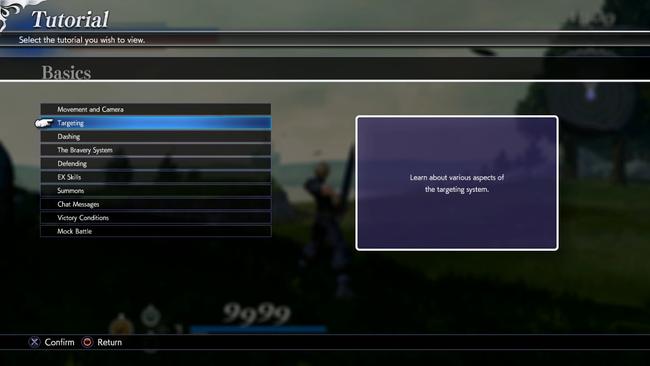
What irks me is the lack of tutorials for each character. NT does have a somewhat comprehensive breakdown of the system mechanics itself. It teaches players the basics of how to move, how the bravery and HP systems interact, how summons work, and so on. There’s even more advanced tutorials providing sample scenarios of how to help out allies that are under attack. That’s all well and good, but like I said earlier - every character is different and has underlying mechanics to each of them that aren’t readily apparent.
There’s no in-game moveset that lays it out for players. There’s nothing in NT that explicitly teaches you Ace’s card mechanics or how you can charge Ramza’s EX Skill bar to immediately use his Shout or Galvanize to help his team out immediately. It also doesn’t emphasize the importance of character-specific details like Golbez’s dragon and how a 1000+ HP attack will kill it off that not only make his attacks significantly weaker, but also changes his EX Skill from a useful AoE freeze to a cooldown timer to summon his pet dragon again.
It’s irritating to see NT make its move to a more competitive game without providing players the tools to learn about the moves of its characters and their specialties.
Beyond that, the game’s longevity lies in its online mode; ranked matches can be done alone or with up to two other comrades. There’s also the option to join and create lobbies that accommodate up to 24 people; this is also the only way to set up 2vs2 or 1vs1 custom matches.
Unfortunately, NT’s unreliable netcode is the most worrying element that severely drags it down.
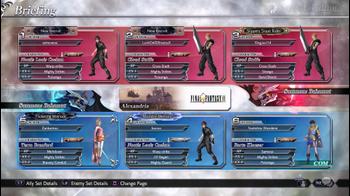
Waiting for ranked matches to get going can last anywhere from thirty seconds to three minutes and sometimes even longer. There’s also a chance that it’ll fill up empty slots with the AI and believe me, it’s not fun losing to a team because the matchmaking randomly decided to fill up an empty slot on my team with an AI that the opposition can bully with ease.
Since NT relies on peer-to-peer connections, there’s more points of connection failure than other typical fighting games; others are normally only concerned with a single connection between two players. In NT, all six players’ connections better play nice with each other because a single bad one can cause severe lag. Ranked matches won’t even let you know if your connection is good with the participating combatants it found, nor will it disconnect or end the match if it’s nigh unplayable. It’s difficult to excuse these problems when another mechanically similar game, Gundam Versus, has these bare minimum safeguards in place.
When it works all fine and dandy online, it’s honestly a great experience. I wish I could say it performed well consistently… but it simply doesn’t. There’s also no way to rematch a team so you’re always kicked out back to the matchmaking queue for ranked matches, so it could take a lengthy amount of time to find another match right away. I think it could benefit with an instant rematch option or change it up to a best-of-three match format so players can get into matches quicker to play more.
Lastly, Dissidia Final Fantasy NT weirdly pads its story mode out by gating players from going through all of it right away. They have to raise their player level to earn Memoria items that unlock story nodes. If you want to see all of it, be prepared to grind out the Gauntlet or online matches. You’re not missing much anyway; it’s a disappointing lackluster affair.
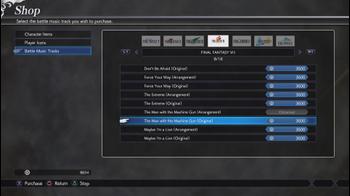
NT’s story does take place after the events of Duodecim on PSP, but it doesn’t rely too heavily on its plot - namely because there’s not much of a plot to begin with. The basic setup is that the new successors of the old deities, Materia and Spiritus, have summoned the heroes and villains of the main games for mysterious reasons. Final Fantasy's mainline heroes split up into small groups and venture forth to learn the truth behind why they were called upon again.
The journey has some amusing small moments between unusual character pairings, but I'm shocked at how dull it gets. I'd think that being able to see these characters interact and duke it out in beautifully rendered cutscenes would, at the very least, be its saving grace. I was wrong.
Going through story mode is a very brief experience though. Once you have all the Memoria to fully unlock its entirety, the whole thing roughly lasts three hours. The main highlights of it are the battles with the summons and a gorgeous cutscene leading up to its final fight.
I’m conflicted about Dissidia Final Fantasy NT because I think it looks fantastic and makes good on its total makeover to a thrilling 3vs3 fighting game. Each character is different enough to make them all worth checking out. My problems with its netcode is a hard thing to overcome though; some characters that have strict timings on their mechanics are almost impossible to fully utilize online; these include Sephiroth’s dash cancels, Squall’s trigger on his bravery attacks, Jecht’s very brief window to parry attacks, and so forth.
Plus, there’s just not much else to it if you’re not planning to play it online with others a lot. Offline NT fighters can go through its slim excuse for a story and then play Gauntlet endlessly to unlock more treasure and gil to buy more things from the shop I suppose.